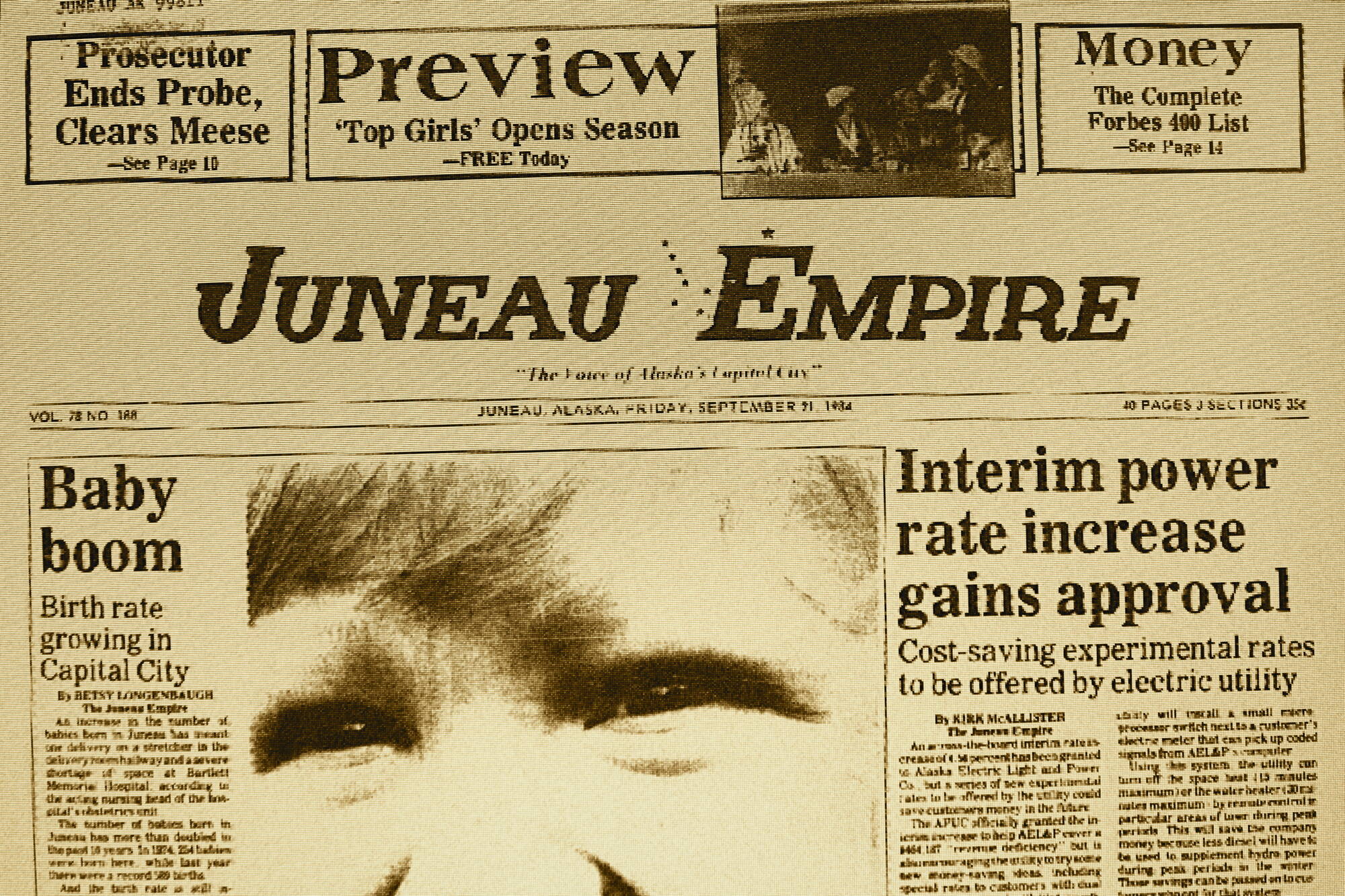Empire Archives is a series printed every Saturday featuring a short compilation of headline stories in the Juneau Empire from archived editions in 1984, 1994 and 2004.
This week in 1984, an increase in the number of babies born in Juneau has meant one delivery on a stretcher in the delivery room hallway and a severe shortage of space at Bartlett Memorial Hospital, according to the acting nursing head of the hospital’s obstetrics unit. The number of babies born in Juneau has more than doubled in the past 10 years. In 1974, 254 babies were born here, while last year there were a record 589 births. And the birth rate is still increasing. Acting Head Nurse Katie Hursch said 47 more babies have arrived at the hospital than had been born by the same time last year.
Today Juneau’s aging and declining population — due largely to departing residents and a “really, really low” fertility rate — is a major concern of city leaders. A study published last November states Juneau currently has a 1.3 fertility rate, with 2.1 being considered necessary to maintain the current population.
Original Story: “Baby boom,” by Betsy Longenbaugh. 9/21/1984.
This week in 1994, the city-borough assembly has created a new crime, “driving while impaired,” setting the blood level for that offense at 0.08 percent. Driving while impaired is an infraction, punishable by a maximum fine of $300, with no jail time. The new law, which is lower than Alaska’s drunken driving standard of 0.10 percent, also sets the blood-alcohol level at 0.04 percent for all professional drivers and 0.01 percent for minors. The city law will go into effect Oct. 19. “It’s going to give us another tool to reinforce to the community that people who operate a motor vehicle must do so soberly,” said Police Capt. Mel Personett. According to Personett, most people arrested for drunken driving in town register substantially over the blood-alcohol limit in state law of 0.10 percent, with the average at about 0.17 percent. He said police stop about two people a month who register 0.08 percent.
Today the statewide blood-alcohol content for drunken driving is 08% for adults and any detectable amount of alcohol for minors.
Original Story: “New law targets drinking drivers,” by James MacPherson. 9/20/1994.
This week in 2004, local voters on Oct. 5 will take one more swipe at the issue of whether smaller or larger high schools are better for students. Voters will decide whether to authorize $54 million in bonds to build and equip an 840-student school at Dimond Park in the Mendenhall Valley. “This is a big step,” said parent Mike Ford, who supports the bond measure. “This is one of those issues that’s going to define the community for years to come.” “Parents and community members need to think they’re improving education” by building a second high school, said Juneau School Board member Andi Story. In a smaller school, teachers will have students in more than one class and be able to collaborate better with each other, Story said. More students can participate in after-school activities. And it will be easier for smaller schools to address problems such as the dropout rate, advocates said. Critics, though, are concerned that the district hasn’t planned for sufficiently distinctive high schools that will reap the benefits of their smaller size. They also fear there will be fewer electives than now, because the number of students interested in those courses will be diluted at each school. And they are concerned that enrollments could drop, not rise, over time, leaving a gap between operating expenses and revenues.
Today Juneau is back to one high school as the new building that was Thunder Mountain High School is a middle school as of this school year due to long-term declining enrollment. Supporters of the consolidation note, among other things, having all students at one high school means there’s a wider range of courses.
Original Story: “Latest Dimond Park HS cheaper,” by Eric Fry. 9/20/2004.
• Contact Mark Sabbatini at mark.sabbatini@juneauempire.com or (907) 957-2306.

